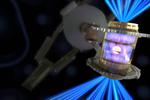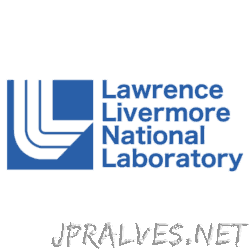Other

“Lawrence Livermore National Laboratory (LLNL) scientists have created vertically aligned single-walled carbon nanotubes on metal foils that could be a boon for energy storage and the electronics industry. Vertically aligned carbon nanotubes (VACNTs) have exceptional mechanical, electrical and transport properties …

“The U.S. Department of Energy (DOE) and DOE’s National Nuclear Security Administration (NNSA) today (Dec. 13) announced the achievement of fusion ignition at Lawrence Livermore National Laboratory (LLNL) — a major scientific breakthrough decades in the making that will …

“Under normal conditions, radioactive materials such as uranium work in a predictable manner. But take those same materials and put them under extreme conditions with high temperature in a short timescale and a rapid cooling process and their decomposition pathways …

“Lawrence Livermore National Laboratory (LLNL) and UC Santa Cruz scientists have detected a previously hypothesized class of nitrogen fixation in the surface ocean. Nitrogen scarcity limits the growth of ocean phytoplankton, a globally important carbon sink and the base of …

“Lawrence Livermore National Laboratory (LLNL) scientists are scaling up the production of vertically aligned single-walled carbon nanotubes (SWCNT) that could revolutionize diverse commercial products ranging from rechargeable batteries, automotive parts and sporting goods to boat hulls and water filters. The …

“Investigating how solid matter behaves at enormous pressures, such as those found in the deep interiors of giant planets, is a great experimental challenge. To help address that challenge, Lawrence Livermore National Laboratory (LLNL) researchers and collaborators took a deep …

“Red dwarfs are the most abundant stars in the Milky Way, making up 70% of all stars. But the physics of their interiors is not well understood. Heat is generated in the core and travels outward to the surface, but …

“A team of researchers from Lawrence Livermore National Laboratory (LLNL) and the University of Michigan has found that the rate of cooling in reactions dramatically affects the type of uranium molecules that form. The team’s experimental work, conducted over …

“Lawrence Livermore National Laboratory (LLNL) scientists recently obtained high-precision thermodynamic data on warm dense nitrogen at extreme conditions that could lead to a better understanding of the interiors of celestial objects like white dwarfs and exoplanets. The team, which includes …

“Lawrence Livermore National Laboratory (LLNL) researchers have developed a new all-optical ultrasound technique capable of performing on-demand characterization of melt tracks and detecting formation of defects in a popular metal 3D printing process. In a paper published by Scientific Reports …

